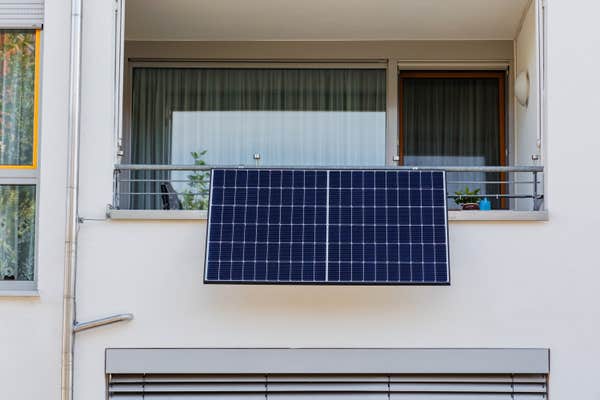Hey team, and welcome back to one5c! Only a few of the stories we share with y’all on the regular center on the natural world. But every now and again, it’s important to remind ourselves that conservation and restoration are climate solutions. The Earth’s natural ecosystems are remarkable in their ability to absorb carbon and restore balance. If we let them.
This week, Olivia’s exploring a couple of ways that idea is manifesting right now—and one of them involves some really, really chubby bears. —Corinne
WHAT WE’RE INTO THIS WEEK
By Olivia Gieger

Planet home
Fat Bear Week celebrates nature’s brilliance and chonk
The air is crisp, leaves are falling, and there may be a pumpkin-spiced something in your hand. Election season is upon us. Oh, no, not that election. One much more joyful and juvenile and chubby: Katmai National Park’s Fat Bear Week. This annual March Madness–style bracket pits 12 of the bears that frequent the Brooks River to feast on salmon (as seen on the park’s Bear Cams) in a fierce competition to see who displays peak chonk. Plump ursines aside, the contest is an important moment to focus attention on the importance of preserving the entire ecosystem these furry beasts depend on. Voting ends tomorrow, so cast your ballot for who you deem the most hibernation-ready chunkster of 2024.
Greenwatch
Watchdogs are calling for better cruise control
MSC Cruise, a privately owned Swiss-Italian cruise company with 22 ships, has touted its goals to be “net zero by 2050,” but Dutch advertising accountability group Stichting Reclame Code (SRC) has called BS. The group declared such advertisements false because of the company’s reliance on liquified natural gas (LNG). While LNG does emit less carbon dioxide than heavy ship fuels, it is still a real source of planet-warming greenhouse gases. The complaint against MSC also took issue with the company’s advertising taglines, including “#SavetheSea,” with good reason: The gray water discharged from the ships (that’s the stuff that goes down the drains of sinks and showers) leads to ecological damage, like oxygen depletion and toxic algal blooms.
Good read
60,000 bees vs. the pipeline
The latest installment of Inside Climate News’ series on the surge of methane pipelines, power plants, and fossil-fuel facilities springing up across North Carolina follows a three-generation bee farming family hoping to halt the Williams-Transco pipeline. The 10,000-mile-long pipeline, which currently runs beneath their farm, funnels methane gas between the Gulf of Mexico and New York. Now, Transco wants to run another line alongside its existing one to keep up with energy demands. Reporter Lisa Sorg explores this rural community’s generations-long fight against a mega energy corporation—and what a family protecting its deep connection to the land could mean for how methane gas expansion plays out in the future.
Cause for optimism
Letting the river run
Last Wednesday marked the completion of the largest dam removal in U.S. history, the result of decades of advocacy from tribes seeking to restore the flow of the Klamath River in the Pacific Northwest. The felling of four massive hydroelectric dams will allow the region’s salmon to make their upstream journey to spawn, hopefully stemming the massive population decline of many species. The harms of dams also extend beyond biodiversity; the structures can lead to swells of methane emissions because they block the natural flow of nutrients, sediment, and vegetation, thus choking the natural carbon cycle. This recent removal echoes other dam-removal efforts across the country, where tribes and environmental advocates are pushing for free-flowing rivers and wildlife health.
MIC-DROP CLIMATE STAT
$11.6 billion
What Americans are expected to spend on Halloween wares this year, about one-third of which will go toward decorations alone.
GOOD QUESTION
Will the U.S. ever have plug-and-play solar?
By Tyler Santora

If homeowners want in on the benefits of solar energy—namely untethering themselves from a predominantly fossil-fueled grid—their best option is often to install solar panels on their roofs. But renters and apartment dwellers don’t necessarily have the same option. One solution? Plug-and-play solar panels.
Internationally, countries like Germany are increasingly adopting what’s become known as balcony solar or plug-and-play solar. But in the U.S., building codes and local permitting schemes make it much more difficult, if not impossible, to harvest the sun’s energy this way. Could that ever change?
What is balcony solar?
Balcony solar works a lot like its rooftop cousin. The systems capture sunlight, which an inverter swaps into the alternating current electricity that powers a home. Unlike rooftop solar, they don’t require any professional setup, and they plug into normal outlets; they also cost as little as $450 each. Most terraces can accommodate one or two panels, and folks can also add a battery to save that energy for nights and cloudy days.
Solar balconies don’t make sense for everyone. Whether a home can reap their benefits depends, for instance, on how much of that outdoor area is shaded, and which cardinal direction it faces: South is ideal, east and west can work, but north’s a no-go.
Balcony solar also can’t cover a household’s entire energy draw—one module can generate about 800 kilowatt-hours of electricity per year and the average American one-to-two-bedroom apartment uses about 900 kWh per month—but it does enable more people to engage in cleaning up the energy mix. Each system saves about 559 kilograms of CO2 emissions per year, which is the equivalent to 12% of what comes out of a car’s tailpipe annually. Scale that up, as Germany has across 500,000-plus homes, and you’ve got 279,500 metric tons of CO2 saved, or 17,500 cars off the road.
Could the balcony solar boom reach the states?
Germany is leading the world in adoption of this tech, and many European countries, including France and Austria, are following in its footsteps. Others, like Belgium and Hungary, don’t allow it yet, in part due to fears that unregistered systems will disrupt the electricity grid.
In the U.S., plug-and-play is a no-go. Local and state permitting requirements and building codes typically tamp down balcony panels through restrictive requirements around grid connections, electrical panels, and fire safety. Although you can see some solar balconies in the country, they’re likely to be standard rooftop solar panels, not store-bought plug-and-plays.
Can that change? Maybe. The Department of Energy has voiced support for plug-and-play projects in the past, and earlier this year, industry publisher North American Clean Energy rekindled that call by establishing a working group to squash barriers to plug-and-play solar in the U.S.
Until the U.S. regulatory landscape changes, however, renters and apartment dwellers can still participate in solar projects—just perhaps not on their own balconies. They can, for instance, check out community solar projects, in which participants get a chunk off their utility bill for subscribing to or purchasing a share of a local solar farm. Or, in a handful of states, residents can consider switching to a utility provider with a great focus on renewables.
